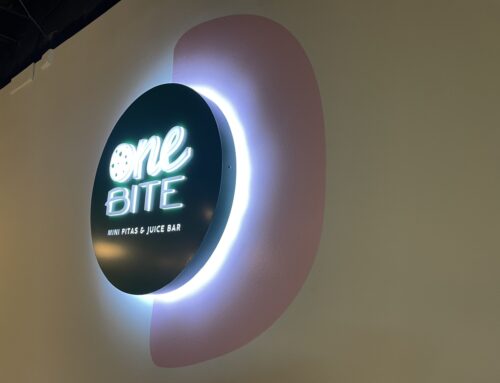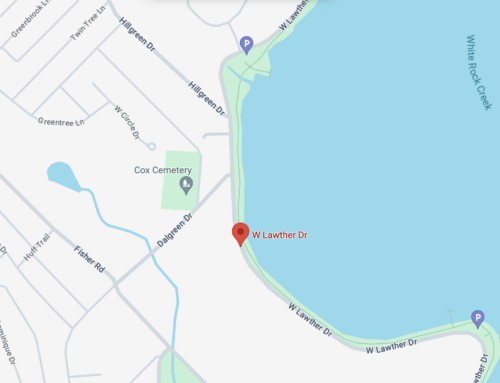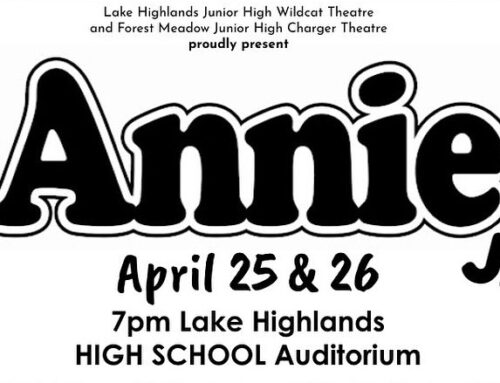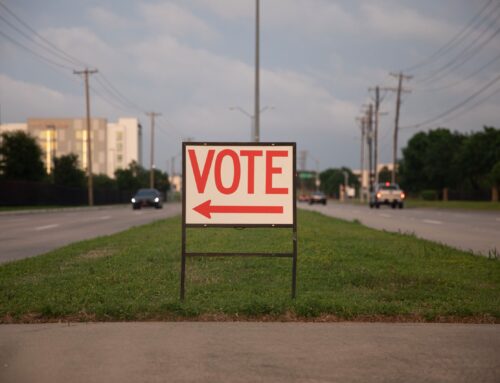Ask Kathy Stewart about retail development in Lake Highlands, and especially in the center of the neighborhood, and she can offer various perspectives. There’s the perspective of a 24-year Lake Highlands resident. There’s the perspective of the president of the White Rock Valley neighborhood association, which includes the intersection of Walnut Hill and Audelia. And then there’s the perspective of the co-owner of the Highlands Cafe restaurant on the southwest corner of that intersection.
“Do we need neighborhood shopping centers? Yes, we do,” says Stewart, who has run the cafe for the past two years with co-owner Anita Siegers (and with the financial backing of 20 Lake Highlands families). “We need centers with a bank and a dry cleaners and a grocery store. And then we need to figure out what else we need.”
And how to get it. And this, despite much good news over the past couple of years, remains the most perplexing issue facing retail and residential development in Lake Highlands. Yes, there has been progress on the neighborhood’s periphery, including the Park Lane project near NorthPark Center, and a good amount of renovation on Northwest Highway and northward along Skillman. But is all this enough to jump start development in the rest of the neighborhood, in the strip centers with their empty storefronts along LBJ, up and down Abrams, farther up on Skillman, and at Walnut Hill and Audelia in the heart of the neighborhood?
Apparently, it was enough to encourage Prescott Realty Group – the seventh developer to take on the Lake Highlands Town Center project – to declare to a standing-room-only crowd at a recent town hall meeting that the company will complete the purchase process on roughly 70 acres at Skillman and Walnut Hill late this month or early in May. Is there finally enough momentum to make this $300 million-plus project work?
“The middle (of the neighborhood) is still the problem,” says former Lake Highlands resident Chris Kelly, a principal with Bedrock Mfg. Co. in Dallas, which funds real estate development projects. “There are still a lot of apartments there, and until the problems those apartments present are addressed, you’re going to have difficulty developing the middle.”
What’s going on?
The good news is that the redevelopment situation in Lake Highlands is not nearly as bleak as it was just a couple of years ago. A lot of storefronts that were empty then, especially in centers on Abrams and Skillman, have tenants. The development of Kingsley Square, which had been a largely vacant shopping center at Walnut Hill and Skillman, is complete, bringing with it solid tenants. In addition, our neighborhood has been recruiting local developers who understand Lake Highlands’ unique needs and problems, and are more willing to work with the community than out-of-towners who are more concerned with the bottom line.
“If you look at the view from 50,000 feet, we’re making tremendous progress,” says Susan Morgan, who oversees development issues for the Lake Highlands Area Improvement Association. “It’s just slow work. And even if we aren’t where we want to be, we’re still leaps ahead of where we were 10 years ago.”
The bad news is that the situation then was very bleak, which means there was a long way to go. The Weitzman Group, which tracks retail occupancy rates, says the occupancy rate for the Northeast Dallas submarket was 88 percent at the end of last year. That doesn’t sound too bad, especially compared to the overall city rate of 89.6 percent. But that figure includes East Dallas and Lakewood, where the vacancy rate is probably in the low single digits. This means the real number in Lake Highlands is probably closer to 80 percent than it is to 90.
Also important: The quality of tenants occupying those spaces. Though that has improved, Morgan says, it’s still not where the LHAIA thinks it can be. For every big-name tenant such as L.A. Fitness and Mi Cocina, there are plenty of dollar stores, coin laundries and thrift stores in what used to be prime real estate. At the Compass Bank center at Skillman and LBJ, which has been the best-managed development in the neighborhood for at least a decade, the tenants include a tanning salon and a cash advance store.
“A lot of developers just can’t see the forest for the trees,” says Mike Cothern, a lifelong Lake Highlands resident who is an associate at broker Revere Commercial Realty. “We have the families, we have the stay-at-home moms, we have the active PTAs and the mother’s day out. But it’s a hard sell. You have to sell it to the corporate guys, and they’re numbers driven.”
And as Lake Highlands residents have been hearing for years, we don’t have the numbers – not enough income, and not enough people with enough income.
“We need a plan with specific goals and objectives for the entire neighborhood,” Stewart says. “We know this is not a good location for big box stores. We need to find creative ideas.”
Which is where, say local officials and developers, all of the activity on the fringes of Lake Highlands will make a difference. The process, they say, works like this: Park Lane and Walnut Hill-Skillman will do well, so the next wave of retailers will want to be close to them. That will spur redevelopment in those areas, replacing low-income apartments with high-end single family homes, quality retail and upscale townhouses. Then that will spur the next round of development, which will do even more of the same thing.
“It will be like a firestorm,” says Lake Highlands’ Jerry Allen, who represents Dallas on the DART board and is running unopposed for the Lake Highlands seat on the City Council currently held by the retiring Bill Blaydes, who has worked hard to bring new development to our neighborhood.
“When all is said and done, the entire area will be primed and ready to go for development,” Allen notes.
But if this happens, developers say, it will happen later rather than sooner. Kelly mentions a 10- to 15-year timeline, and Cothern compares the pace of development to what happened in Lakewood. In the early 1990s, Lakewood had empty storefronts, high crime, and little quality local or national development. Today, there are national chains such as Carraba’s and Whole Foods, high-end specialty shops, and competition among developers to do deals. Even the older grocery store centers are becoming fully leased.
The wild card is the Town Center. If it’s built, the neighborhood will receive a boost it hasn’t seen in decades. Despite six rounds of developers pitching their plans for the project then walking away from it, neighborhood residents kept the faith that the deal will happen. And judging by the frequent thunderous applause at the town hall meeting, most neighbors are convinced (or at least hopeful) that Prescott will be our lucky number seven.
At the meeting, Prescott developer Vance Detwiler said the 70-acre project would include 280,000 square feet of retail and 1 million square feet of residential development, along with office space, a network of parks and hiking trails, and a DART station. About one-quarter of the development, including the DART station, will be north of Walnut Hill; the remainder to the south. Detwiler says construction could begin as early as November 2008 and should be complete by mid-year 2010.
But a number of questions about Town Center remain to be answered:
First, why will Prescott succeed where six other developers failed? In 2004, for example, The Dallas Morning News quoted city and DART officials as saying they had a developer ready to start building; obviously, it didn’t happen then.
Allen says Prescott has the character and the vision to do what others couldn’t, but at the town hall meeting, a few neighbors voiced their concerns that the land had not even been purchased yet. One neighbor even grilled Detwiler about snags, holdups or anything else that would keep the company from following through with its purchase and moving forward with the project.
“Are you trying to pin me down?” Detwiler joked.
He emphasized, however, that Prescott had put non-refundable earnest money down with no contingencies on its contracts, adding: “It would be extremely painful for us as a company not to close.”
Second, who will rent the retail space? Detwiler, answering a question from the audience, said his company hasn’t done any pre-leasing and doesn’t expect to do any. No pre-leasing, real estate experts say, is unusual for a development of this magnitude. In addition, 280,000 square feet is a lot of retail space – 100,000 more than Mockingbird Station and about as much as West Village and its current expansion. Complicating matters further, the Park Lane development, with 750,000 square feet, is supposed to open in 2008.
“The jury is out. This is not a slam dunk,” says Ed Fox, a retail real estate expert at Southern Methodist University. “You’re going to be going after the same kinds of retailers that you have at NorthPark. That makes this kind of development dicey.”
Third, where will the money come from? Detwiler says to completely build out the project, it will cost just over $300 million; according to published reports and estimates from other commercial real estate experts, a project of this magnitude could cost as much as $400 million. To put this number in perspective, consider that American Airlines Center cost $420 million and the Park Lane project is estimated to cost $500 million. That’s a lot of money that needs to find its way to the middle of our neighborhood.
Currently, there is $10 million from DART to build a train platform, a chance for limited funding from the North Central Texas Council of Governments and the City for infrastructure improvements, some funding from the 2006 bond package, some money from the Skillman tax increment financing district, and potentially even cash from the park department. At the town hall meeting, Detwiler said his group would ask the city for a Public Improvement District, or PID, which assesses property owners to pay for services not provided by the City.
Still, how will Prescott make up the difference (still in the hundreds of millions of dollars) from private sources?
Finally, how firm is DART’s commitment? The lynchpin of the Town Center seems to be DART’s presence, which will make it possible to raise money for a Mockingbird Station-like project. Jack Wierzenski, DART’s director of economic development and planning, says DART reserves the right to withhold the $10 million – only enough money to pay for a platform similar to the one at Park Lane, not including the parking lot – if it decides the center is not what the agency calls a transit-oriented development.
That means it must be a destination for DART riders (not just a couple of big-box retailers like Home Depot) and the developer has to find enough money to build something more than just the DART platform. And Wierzenski says, DART officials still remember that neighborhood opposition scuttled a plan to build the station in the mid-1990s.
Nevertheless, Morgan says: “I believe it will be built. I can’t tell you when, but there is momentum for the project, and you can see it in the area.”
In this, she isn’t alone – not just for the Town Center, but for redevelopment from LBJ to Northwest Highway and Central eastward.
Says Allen: “In three or four years, you’ll need to wear sunglasses.”





